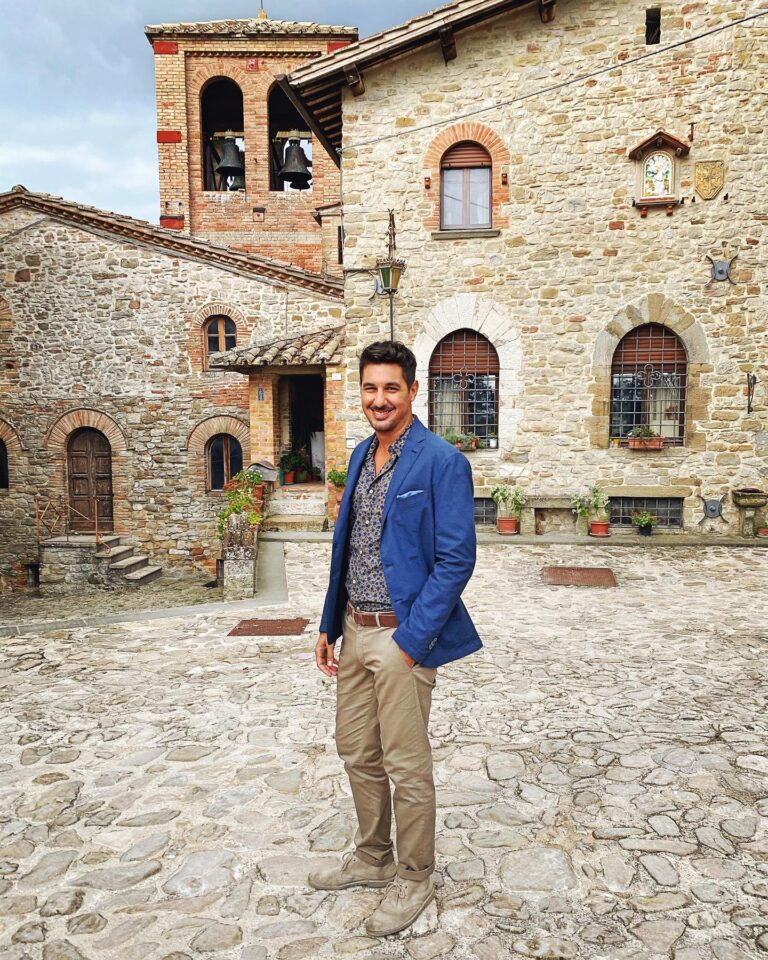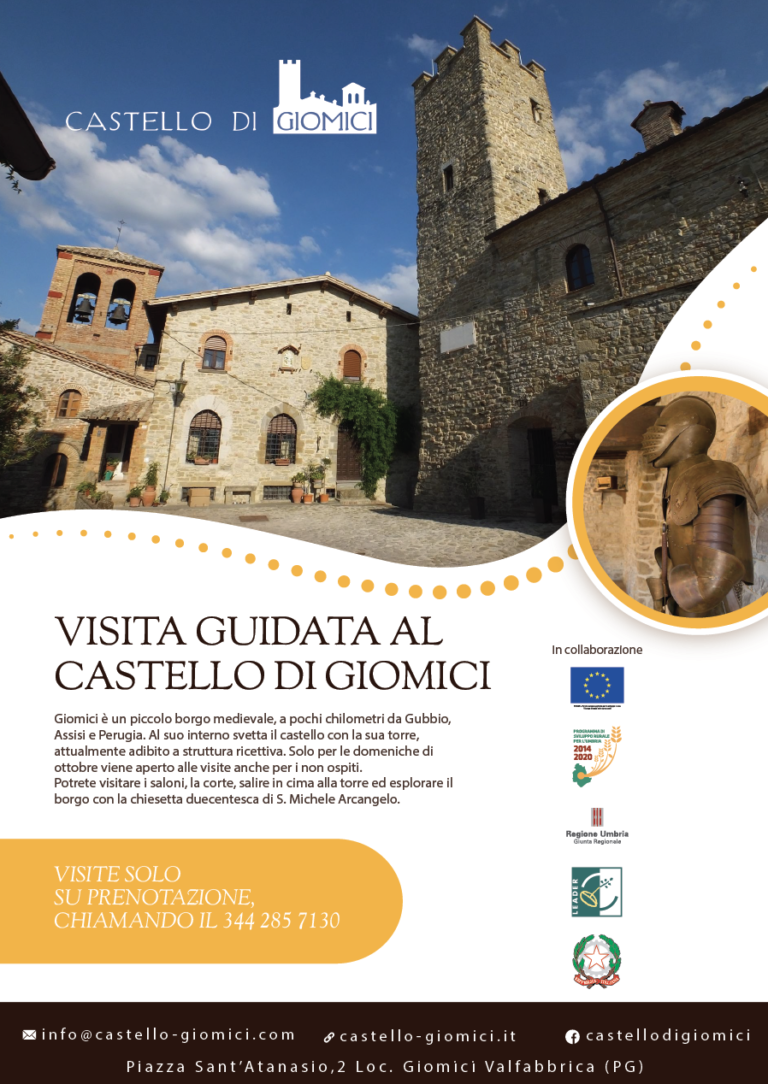Giomici is mentioned in various historical documents with the ancient names “Glomisso”, “Giomisci”, “Chiomiscio”, “Giomisce”….
Initially it was a strategic watchtower of the Byzantine Corridor, along the defense line from the Gothic and Lombard invasion; the origin of the castle dates back to the 11th century.
In 1163 the Emperor Frederick Barbarossa assigned the castle with the court and churches to the monastery of San Donato di Pulpiano in the Eugubian land.
At the end of the 12th century a sixth of the castle was owned by the Counts of Coccorano.
In 1240 the monks of Pulpiano ceded the castle (“Castrum Glomisci eius curiam totam, com hominibus servitii et utilitatibus”) in enfituesi to Monaldo di Suppolino, descendant of the counts of Nocera, but after the war with Perugia in 1258 Gubbio bought from Monaldo himself a palace, a tower and the keep to feel more certain of control, since Giomici formed together with Biscina, Caresto, Coccorano and other castles, the defensive system of Gubbio on the border with Perugia.
In 1378 the Eugubian bishop Senso de ‘Gabrielli took possession of Giomici but a heroic castellan, such Petruccio de Ciuccio de’ Villamaiana, resisted by perching in the highest tower, which was then demolished, “falling on the roof of the house next door” .
With the advent of the Montefeltro Giomici dominion in Gubbio, it became the border possession of the Duchy of Urbino, which also defended the castle from the attack by Braccio da Montone, which took place in 1419 on behalf of Perugia.
In the sixteenth century it was still an exponent of the Gabrielli family, Nestore, who owned the castle part of the castle, which he had to restore and make it a “refuge for men and goods”.
In the mid-seventeenth century the castle of Giomici and the annexed lands became the property of the Vagni family, originally from Lunigiana (north of La Spezia).
In 1929 it became part of the municipal territory of Valfabbrica.
The church of San Michele Arcangelo dates back to the mid-twelfth century and contains frescoes from the fifteenth century, some of which are attributed to the well-known painter Matteo da Gualdo.
There is also a 17th-century polychrome ceramic by the Gualdese artist Francesco Biagioli known as “il Monina”.
A curiosity: it is said that Santa Chiara of Assisi, who was a relative of the Counts of Coccorano, as a newborn had a nurse near Giomici.












